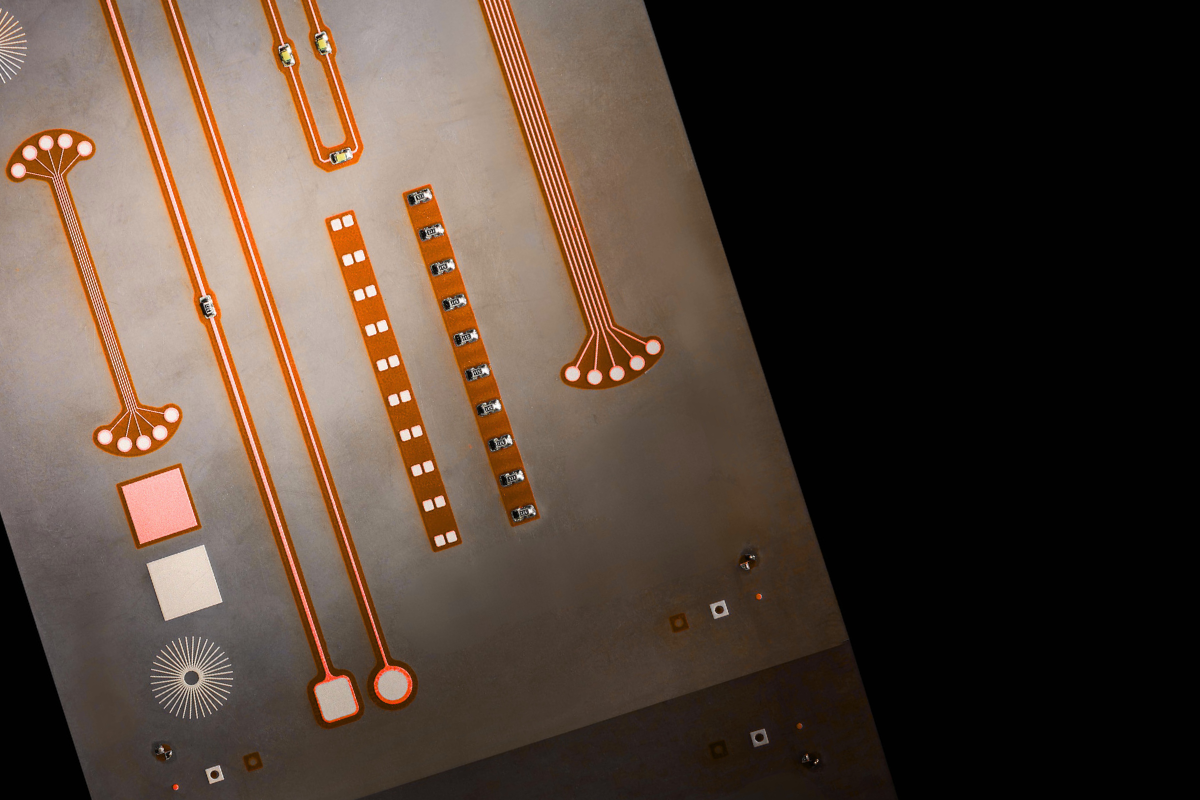Flex PCBs
FLEXOO delivers innovative Flex PCB solutions with a game-changing advantage: 100% solderable flexible circuits. As one of the few suppliers, we master the technology of manufacturing solderable flexible PCBs that eliminate the need for expensive connection methods.
We manufacture three key Flex PCB types: Single-sided circuits perfect for cost-sensitive applications like RFID tags, multi-layer designs up to 2 layers for complex functionality, and specialized wearable PCBs that seamlessly integrate into clothing and medical devices.
What are Flex PCBs?
Flexible printed circuit boards (Flex PCBs) are a groundbreaking type of electronic circuit designed to bend, twist, and fold without losing electrical performance, unlike traditional rigid boards. Made with pliable materials like polyimide, they allow copper traces to carry signals even when flexed. This inherent flexibility enables them to fit into unique shapes and tight spaces, revolutionizing product design where rigid boards simply won't work.

How do Flex PCBs work?
Flexible printed circuit boards (Flex PCBs) are a groundbreaking type of electronic circuit designed to bend, twist, and fold without losing electrical performance, unlike traditional rigid boards. Made with pliable materials like polyimide, they allow copper traces to carry signals even when flexed. This inherent flexibility enables them to fit into unique shapes and tight spaces, revolutionizing product design where rigid boards simply won't work.
Why should you choose FLEXOO as your Flex PCB provider?
Use case applications for Flex PCBs

Flex PCBs in MedTech

Flex PCBs in the automotive industry

Flex PCBs in IoT and wearables

Flex PCBs in smart packaging
Frequently Asked Questions
Let’s start to work on your challenge!
Ready to take the next step? Reach out to our sales team today and discover how we can tailor our solutions to meet your needs.
Contact our sales team!
Is your question more specific and would you like to talk to an expert? Make sure to reach out sales experts, they will be happy to advise you!





